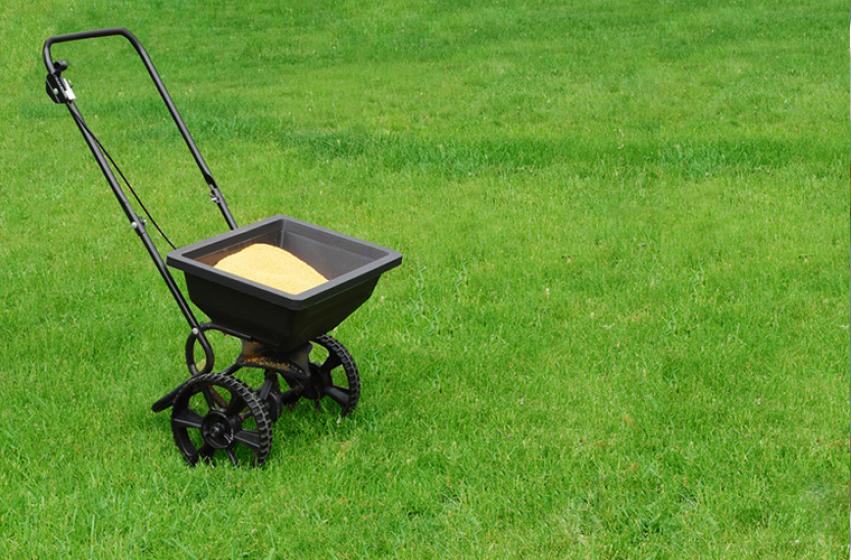by Kathy Van Mullekom, a lifelong gardener and gardening writer living in York County, Virginia
It’s been a weird-weather year for lawns. First, a cool spring was kind to yards and then June’s rainy days kept lawns lush. When a cruel July arrived with little rain and lots of sweltering heat, cool-season fescue lawns succumbed to the heat and limped into summer dormancy. Bermuda lawns – like the one I have -- browned up a little, too. If your fescue lawn looks like it’s been through the crisper, now is the time to bring it back to life. Bermuda also needs fall help to maintain its vigor.
Virginia Cooperative Extension recommends fall as primetime lawn-care season and garden centers are stocked for the occasion. Spring is not the best time to redo or rejuvenate a lawn because new grass roots can’t establish before hot, dry weather typically arrives. To get your cool-season fescue lawn green and growing again, have a three-month plan that first includes spot spraying for weeds. If your lawn is more than 50 percent weeds, the entire lawn needs to be killed and redone. Healthy soil is the key to vigorous grass, so take a soil test to see what nutrients your soil needs. This simple practice saves you time and money from adding unnecessary fertilizers – and, at the same time, benefits the environment, which can be harmed from excess fertilizers running into storm drains and eventually into waterways. Next, aerate your lawn and then seed it. In 30 days, your lawn is ready for its first fertilizer application, which should be done by end of October. Second and third applications should be applied in November and December, respectively. For Bermuda, apply a winterizing fertilizer to maintain strong root development. With a little TLC and a lot of fall focus, your grass will always be greener on your side of the fence.
photo by Kathy Van Mullekom

